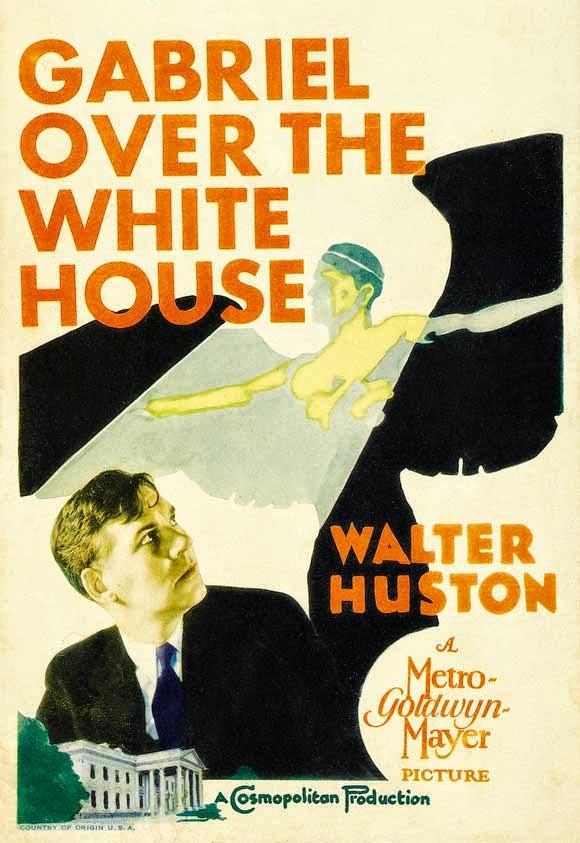Gabriel Over the White House (1933)
Produced by William Randolph Hearst of Citizen Kane fame, and starring Walter Huston, Gabriel Over the White House is universally considered to be the first pro-fascist American film. Though Hearst was a lifelong Democrat and supporter of Roosevelt, he could barely suppress his love for Il Duce and the Furher. Basically Gabriel Over the White House is about corrupt politician Judd Hammond who gets elected on a wave of false promises during the depression, but after surviving a near-fatal car accident, he vows to reform his ways and becomes a messiah-like figure, suspends congress, and grants himself absolute power. The film was supposedly made to "prepare" the American people for dictatorship should Roosevelt need to seize full executive powers to end the depression. Roosevelt was also on-hand to read the script and even suggested changes of his own that were incorporated into the final product. However, despite Hammond championing the working class, this is far from a left-wing or pro-socialist film. Hammond's economic policies, or at least the glimpse we are given of them fall more in line with the corporatist economies implemented by the European fascist states. He places the workers into a kind of strict civilian army, and never abolishes private industry. Hammond also creates his own kind of personal army to fight bootleggers, and in one scene, has gangsters executed by firing squad after a show trial while the Statue of Liberty looks on in the background. Though some may be quick to point out Hammond's resemblances to Stalin, one must also remember that Stalinism really has little to do with actual Marxism or socialism, and is more authoritarianism cloaked in socialist rhetoric (Stalin eventually embraced the nationalism the Bolsheviks had swept away during the war years). Gregory LaCava's direction is certainly striking and stylistic, and some of the set pieces here are particularly stunning for their baroque expressionism. Without the artistry, however, this film would be more of a historical curio than anything else. And the fascism on display here is not as shocking as some commentators have made it out to be. In 1933 fascism had not yet fully coalesced into what we think of it today. Mussolini had ruled with an ostensibly democratic facade until 1929, and Hitler had only just taken power. If President Hammond seems tame, he would not have for the time. And the string of strongman presidents that followed the end of the war have perhaps desensitized most Americans to the prospects of fascist rule. Still, Gabriel Over the White House is an important film as much as it is an intriguing one, and surely one of the most bizarre products created in Hollywood.


Comments
Post a Comment